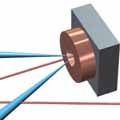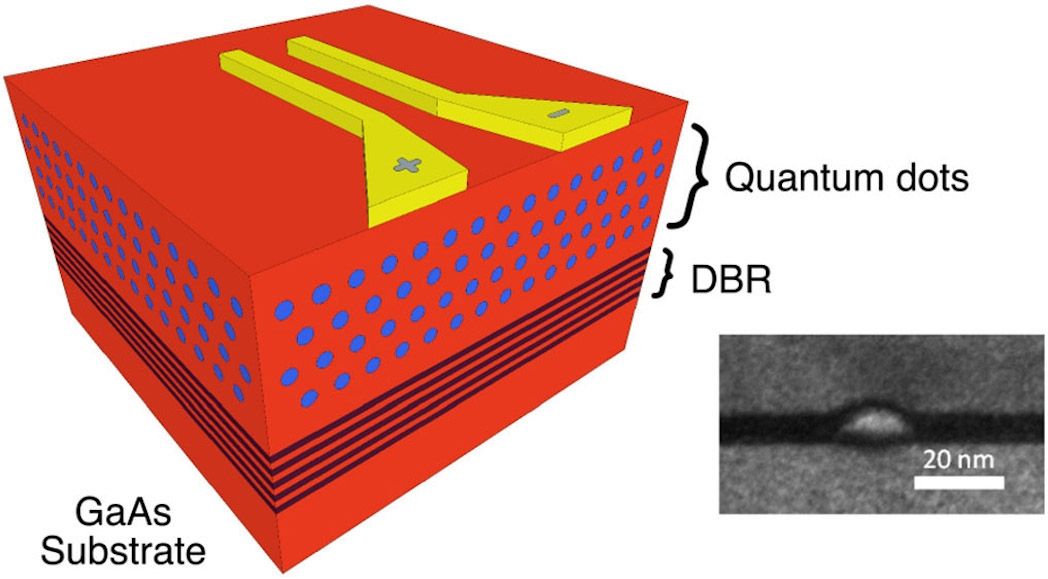Creating tunable terahertz radiation.
Indium arsenide quantum dots in gallium arsenide wafers offer wider pump-wavelength range, significantly higher thermal tolerance, and higher conversion efficiency than typical terahertz radiation sources.

The terahertz (THz) range of electromagnetic waves (0.1–10THz)—which lies between the microwave and optical regions—is of great interest. This is mainly because this band of the electromagnetic spectrum includes the frequencies of rotational and vibrational spectra of complex (e.g., biological) molecules. Most dielectric materials are transparent in the THz region, and THz waves are already used in many biomedical applications (e.g., for the detection of dangerous and illicit substances, as well as for the diagnosis and treatment of diseases). Photoconductive antennas are the most-developed room-temperature sources of THz radiation. However, ultrafast low-temperature-grown gallium arsenide (GaAs)—which is typically used as a substrate for such antennas—suffers (because of its large band gap) from low thermal efficiency, low carrier mobility, and a pump limit at a wavelength of about 850nm.
